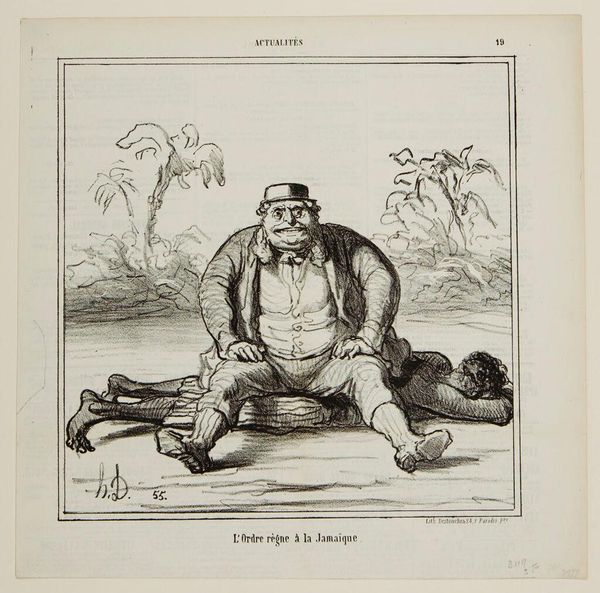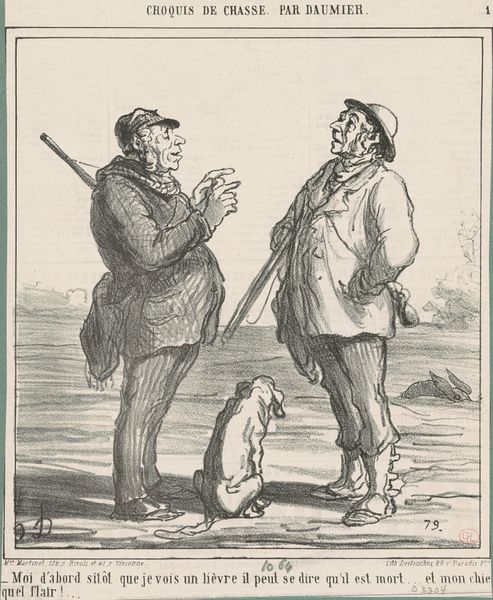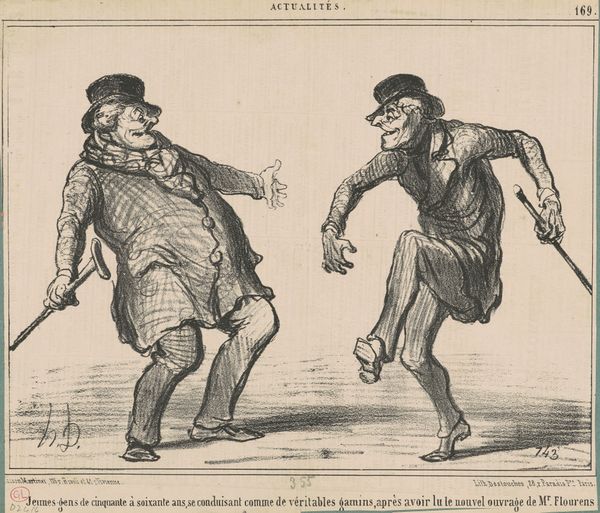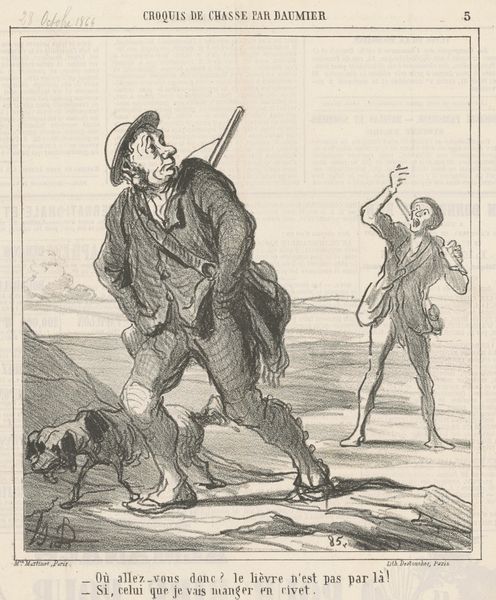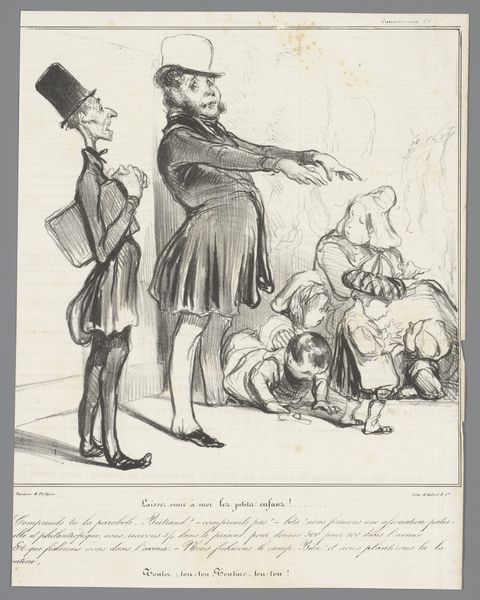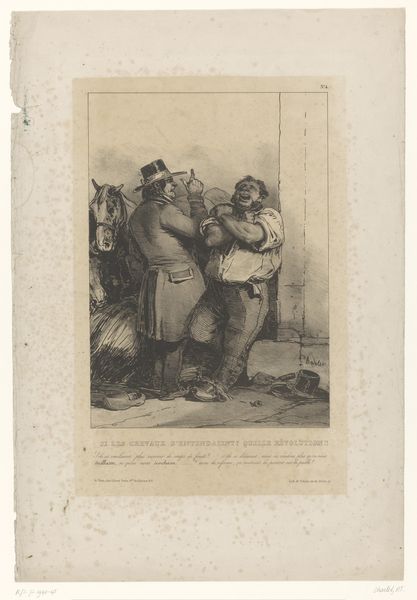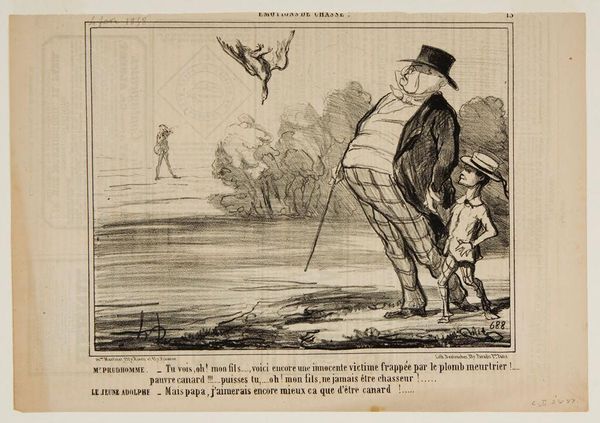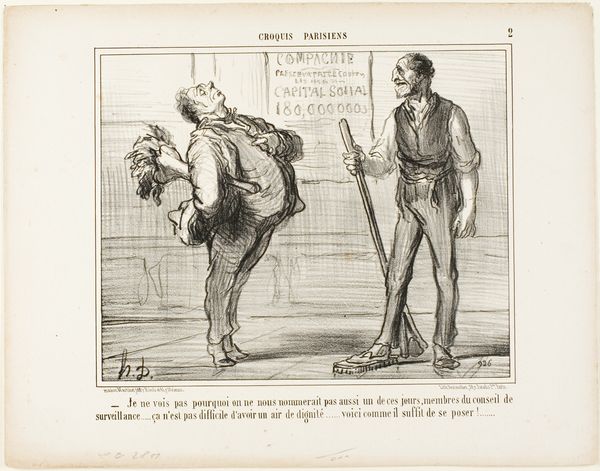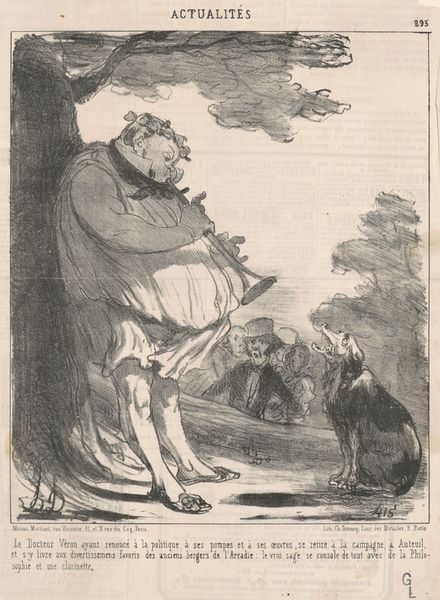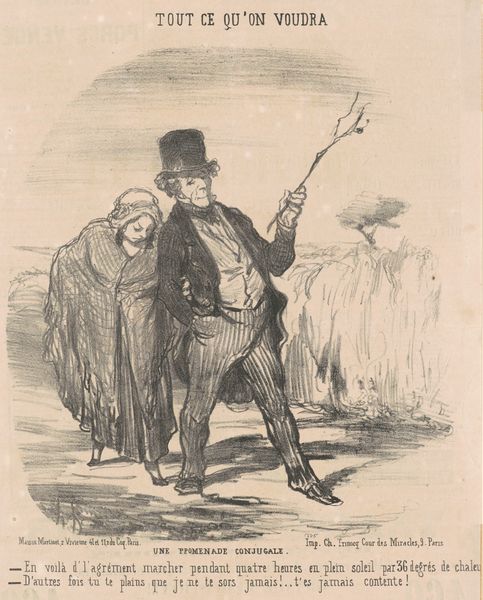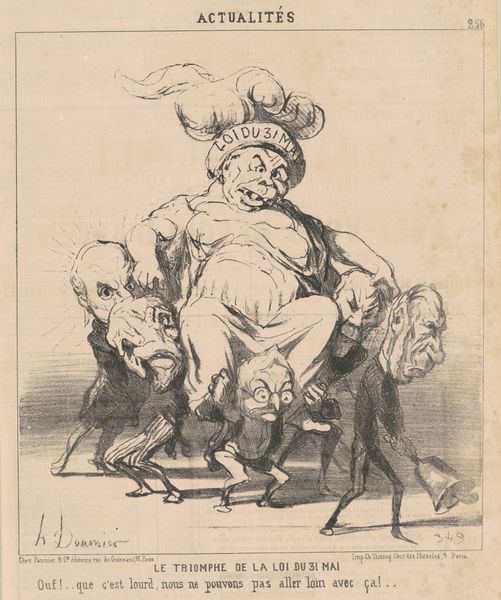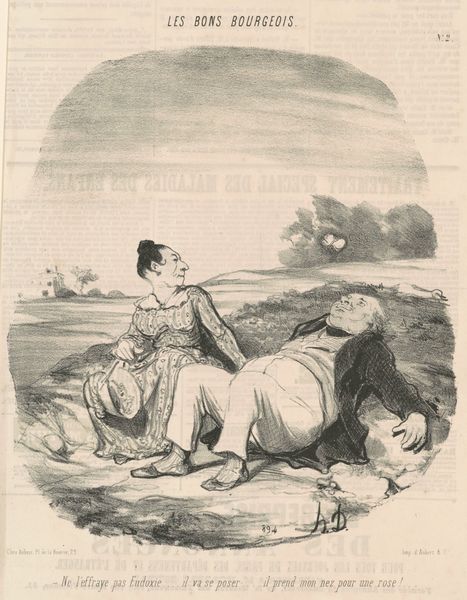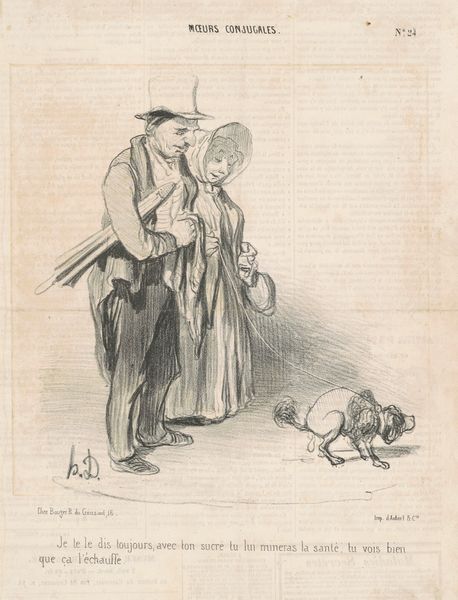
Copyright: National Gallery of Art: CC0 1.0
Editor: So this lithograph from 1866, titled "L'Ordre règne à la Jamaïque" by Honoré Daumier... it's intense, isn't it? The heaviness of the figure contrasted with the limp body beneath him is just...stark. What do you make of it? Curator: It's certainly meant to sting, isn't it? The visual weight of the colonizer crushing the colonized... Daumier, bless his rebellious heart, captures the smugness of power beautifully, or rather, tragically. See how the lush foliage fades into a blurry background, as if nature itself is weeping? Editor: The way you described the smugness...it definitely hits. And the blurry foliage makes total sense now. Was Daumier openly critical of colonialism at the time? Curator: Openly! With the sharpened blade of satire! This piece, I suspect, reflects on the Morant Bay rebellion, a bloody chapter in Jamaica's history. "Order Reigns in Jamaica" rings with biting irony, a critique of the brutal repression disguised as civilization. What do you think the newspapers felt about publishing this at the time? Editor: Wow, that context makes it even more potent. You can see how Daumier turns the "civilizing mission" on its head, showing its grotesque reality. It’s unsettling and makes you question everything. Curator: Exactly! And great art should poke at your soul. Daumier’s wasn't just sketching; it was an act of defiance, a cry for justice etched in ink and stone. Makes you think about the role of art in political discourse, doesn’t it? Editor: It really does. Thank you for showing me how the artist challenges viewers to see beyond the surface. Curator: And thank you for sharing your insight. Every viewing is a layer revealed, a conversation with history itself.
Comments
No comments
Be the first to comment and join the conversation on the ultimate creative platform.
